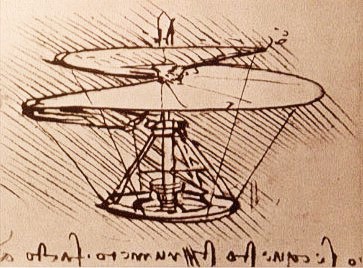 on the greatest artists of the renaissance era, though one could consider Leonardo Da Vinci and Michelangelo to still be master artists in even today's world.
on the greatest artists of the renaissance era, though one could consider Leonardo Da Vinci and Michelangelo to still be master artists in even today's world.Even in preschool, I knew his name and I knew the Mona Lisa, her printed image hanging in the classroom for me to stare at while I tried to understand how such a strange-looking woman with no eyebrows could be so famous. As time went on and the understanding grew with my love of the arts, I began to revere Leonardo Da Vinci as a genius with so much more than his hands.
 Lionardo di ser Piero da Vinci was acclaimed to be the embodiment of the renaissance, being talented in painting, math, anatomy, music, early science, sculpting, architecture, writing, engineering, and so much more. His journals had in-depth and anatomically correct sketches of the inside of the human body with such minute details they appeared to be the illustrations right from a text-book. He could craft any fine instrument and also be able to play it, and could conceptualize technological ideas that only became real in the last century like the parachute or helicopter. His finished art that remains today is world re-known, such as the "Mona Lisa" and his commissioned piece "The Last Supper." Even his unfinished work and his journals tour museums around the globe.
Lionardo di ser Piero da Vinci was acclaimed to be the embodiment of the renaissance, being talented in painting, math, anatomy, music, early science, sculpting, architecture, writing, engineering, and so much more. His journals had in-depth and anatomically correct sketches of the inside of the human body with such minute details they appeared to be the illustrations right from a text-book. He could craft any fine instrument and also be able to play it, and could conceptualize technological ideas that only became real in the last century like the parachute or helicopter. His finished art that remains today is world re-known, such as the "Mona Lisa" and his commissioned piece "The Last Supper." Even his unfinished work and his journals tour museums around the globe.
Michelangelo was the only man who could be considered a rival to Leonardo's work in the Renaissance era.
Though also multi-talented, his preferred art expression was sculpting, creating one of his most famous pieces, the Pieta, at only age twenty two. But the sculptor's most famous piece of art was not a sculpture or relief, but his painting of the ceiling of the Sistine chapel which took him forty years to complete. Michelangelo was gifted also in both poetry and architecture.
Click here for a video tour of the inside of the sistine chapel!
Click here to view more of Da Vinci's art and inventions










